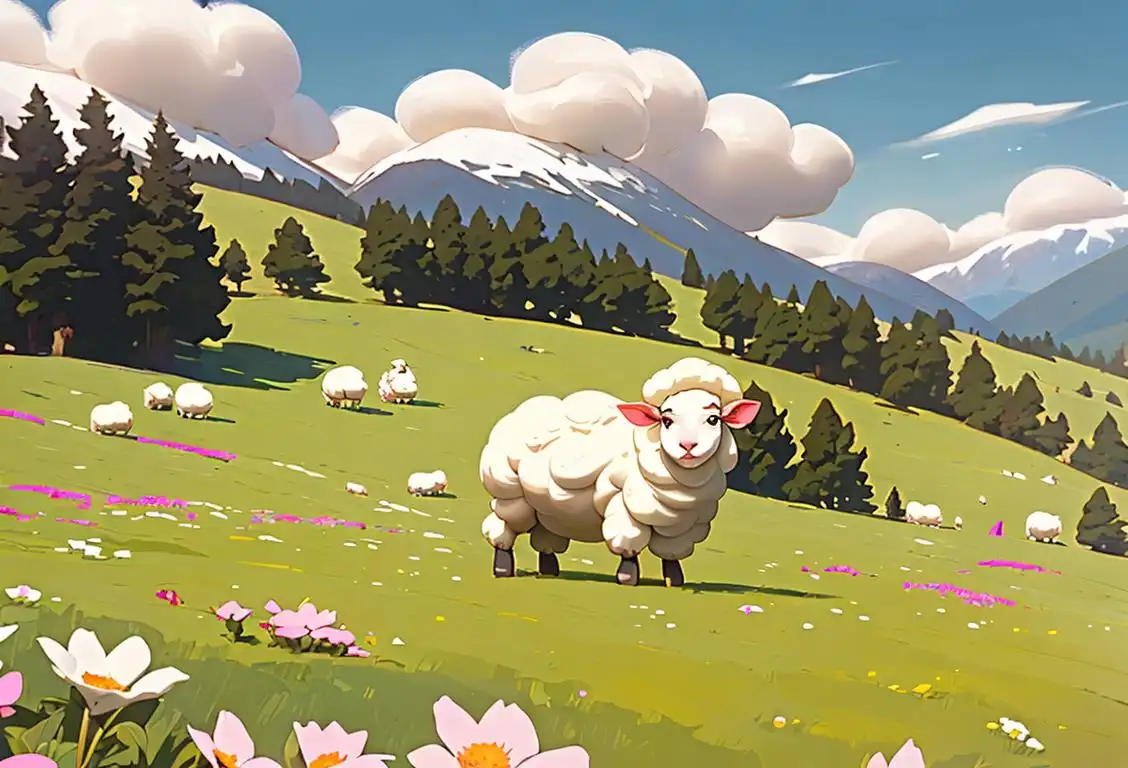National Sheep Day

Ah, National Sheep Day! Get ready for a baaa-rilliant celebration filled with fluffy wool, adorable bleating, and some fascinating sheep-centric facts. This woolly day is shearly delightful, and we're here to fill you in on all the sheep-related shenanigans!
When is Sheep Day?
It's national sheep day on the 13th March.
A Flock-tastic History Lesson
Let's dive into the history of National Sheep Day, shall we? This special day is all about honoring our fluffy friends and recognizing their significant role in agriculture and our daily lives. Sheep have been domesticated for thousands of years, providing us with wool, meat, and milk.
The origins of National Sheep Day are as mysterious as a black sheep in the night. While there's no specific Internet history to document its origins, it's safe to say that this day was established to pay homage to these wonderful creatures. Sheep deserve a day of recognition, and what better way to celebrate than by sharing sheepish stories and embracing their cuteness?
Woolly Fun Facts
Did you know that sheep have rectangular pupils? Yep, those lovable creatures have some pretty unique eyes. Their rectangular pupils allow for wide peripheral vision, helping them spot potential predators lurking nearby. It's like having built-in sheep goggles!
Another fascinating fact about sheep is that they have an incredible sense of smell. In fact, a sheep's sense of smell is so powerful that they can recognize and remember the distinct odor of up to 50 different sheep or humans. Talk about having a nose for friendship!
Now, here's a little woolly wisdom for you: Did ewe know that a single sheep can produce up to 30 pounds of wool per year? That's enough wool to knit countless cozy sweaters and blankets! Time to start planning your next knitting project, right?
Sheep-tacular Celebrations
On National Sheep Day, communities come together to honor these fluffy friends in various ways. From sheep shearing demonstrations to sheepdog trials and even sheep-themed crafts, there's no shortage of sheep-tacular celebrations happening across the country. Whether you're a farmer, a sheep enthusiast, or simply someone who loves woolly cuteness, this day is for everyone to enjoy!
So, how can you celebrate? Visit a local farm and cuddle with some sweet lambs, create wool-based crafts, or indulge in a delicious meal featuring lamb as the main course. Don't forget to share your fluffy adventures with the hashtag #NationalSheepDay!
Sheepish Tags
Tags: loved ones, food, sports, awareness, fun
History behind the term 'Sheep'
10000 BC
Domestication of sheep
Sheep were domesticated around 10,000 BC in ancient Mesopotamia, making them one of the oldest domesticated animals. This marked a significant shift in human civilization as it provided a constant supply of wool, milk, and meat. Sheep quickly became integral to the survival of many ancient cultures.
7000 BC
Sheep spread to Europe
Around 7,000 BC, the practice of shepherding and sheepherding spread to Europe. The availability of abundant pasturelands and favorable climates contributed to the widespread presence of sheep in ancient civilizations such as Greece, Rome, and Celtic tribes. This further solidified the cultural and economic importance of sheep in these societies.
4000 BC
Sheep in ancient Egypt
By 4,000 BC, sheep had reached ancient Egypt, where they were highly valued for their wool, milk, and religious symbolism. Sheep were associated with the sun god Ra and the fertility goddess Isis, and their imagery and symbolism appeared in various ancient Egyptian art and rituals.
14th century
The wool trade
During the 14th century, the wool trade became a vital part of the European economy. England, in particular, became renowned for its high-quality wool production and export. The wool trade brought immense wealth and prosperity to merchants and wool producers, contributing to the growth of cities and the development of the textile industry.
18th century
Selective breeding and diverse breeds
In the 18th century, selective breeding practices emerged, leading to the development of diverse sheep breeds with specific traits suitable for various purposes. Different breeds were bred for wool production, meat quality, or a combination of both. This specialization in breeding allowed farmers to cater to specific market demands.
21st century
Sheep's cultural significance
In the 21st century, sheep continue to hold cultural significance in many parts of the world. They are associated with rural landscapes, traditional farming practices, and sustainability. Sheep play a role in various cultural events, such as sheepdog trials, wool festivals, and religious ceremonies. Additionally, the term 'sheep' has evolved to become a metaphor in popular culture, often used to describe people who follow others without questioning or independent thinking.
Did you know?
Did you know that sheep have rectangular pupils and a powerful sense of smell? Fascinating, right?Tagged
awareness food fun loved ones sportsFirst identified
13th March 2020Most mentioned on
13th March 2020Total mentions
44Other days
One Day
Action Day
Opposite Day
Happiness Day
Suicide Prevention Month Day
Bowling Day
Foundation Day
Drink A Beer Day
Trivia Day
Awareness Day









